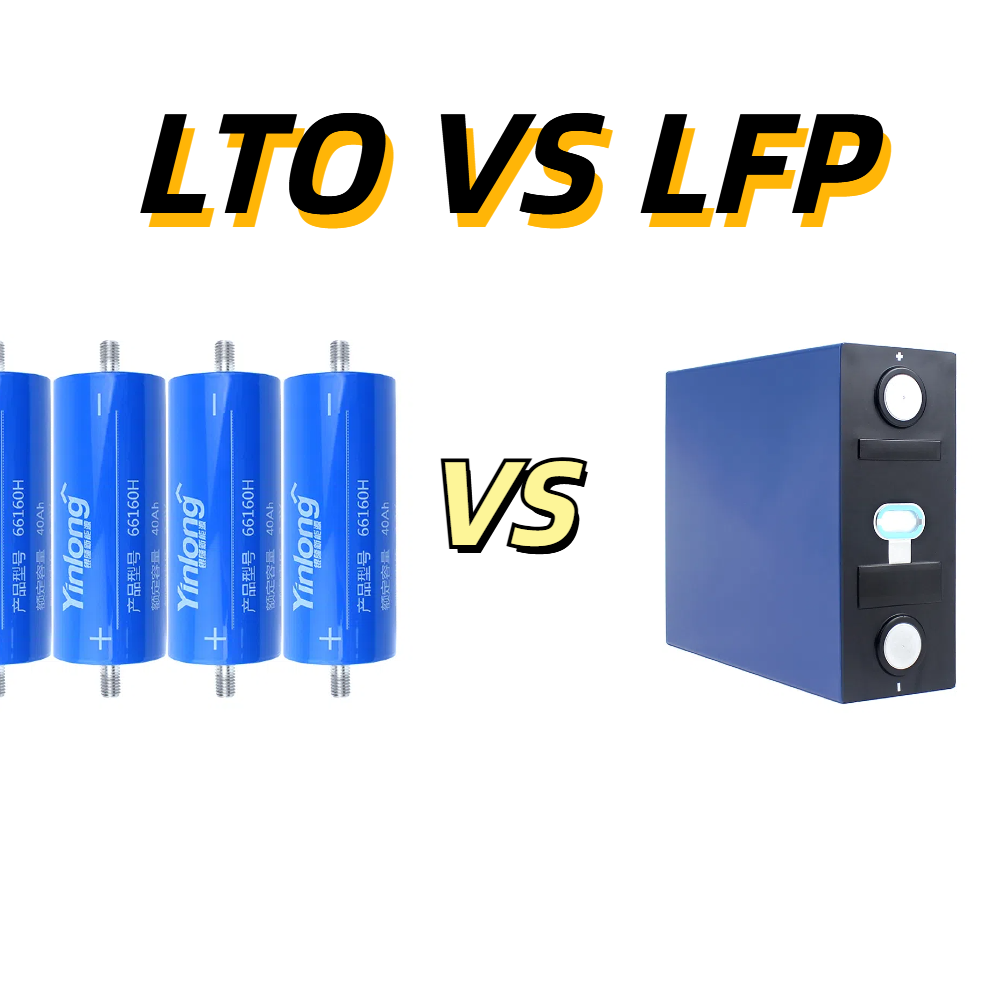#### Introduction
In the world of rechargeable batteries, two types are gaining significant attention for their unique properties and applications: Lithium Iron Phosphate (LiFePO4) batteries and Lithium Titanate (LTO) batteries. Both offer distinct advantages and are suitable for various applications, but how do they compare? In this blog post, we’ll dive into the key differences, advantages, and potential use cases for each battery type.
#### Overview of LiFePO4 Batteries
**Lithium Iron Phosphate (LiFePO4) batteries** are a type of lithium-ion battery that uses lithium iron phosphate as the cathode material. They are known for their high safety, long cycle life, and thermal stability.
- **Chemical Composition**: LiFePO4 (lithium iron phosphate) as the cathode, graphite as the anode.
- **Voltage**: Nominal voltage of 3.2V per cell.
- **Energy Density**: Typically around 90-160 Wh/kg.
- **Cycle Life**: Can exceed 2,000-4,000 cycles.
#### Overview of Lithium Titanate Batteries
**Lithium Titanate (LTO) batteries** use lithium titanate as the anode material instead of the conventional graphite found in most lithium-ion batteries. This gives them unique properties, including exceptional safety and a long cycle life.
- **Chemical Composition**: Li4Ti5O12 (lithium titanate) as the anode, typically lithium manganese oxide (LiMn2O4) as the cathode.
- **Voltage**: Nominal voltage of 2.4V per cell.
- **Energy Density**: Typically around 70-110 Wh/kg.
- **Cycle Life**: Can exceed 10,000 cycles.
#### Key Comparisons
##### 1. **Safety**
- **LiFePO4**: Known for its high thermal and chemical stability, making it one of the safest lithium-ion battery chemistries. It is less prone to overheating and thermal runaway.
- **LTO**: Offers even higher safety due to the very stable structure of lithium titanate, which virtually eliminates the risk of dendrite formation. LTO batteries are highly resistant to thermal runaway.
##### 2. **Energy Density**
- **LiFePO4**: Generally has a higher energy density (90-160 Wh/kg) compared to LTO batteries, making it more suitable for applications where space and weight are critical.
- **LTO**: Lower energy density (70-110 Wh/kg) compared to LiFePO4, which can be a limitation for portable applications.
##### 3. **Cycle Life**
- **LiFePO4**: Offers a long cycle life, typically exceeding 2,000-4,000 cycles.
- **LTO**: Superior cycle life, often exceeding 10,000 cycles. This makes LTO batteries ideal for applications requiring frequent charging and discharging.
##### 4. **Charging Speed**
- **LiFePO4**: Can be charged relatively quickly, but not as fast as LTO batteries.
- **LTO**: Known for very fast charging capabilities due to the high surface area of lithium titanate particles, allowing for rapid ion transfer.
##### 5. **Temperature Range**
- **LiFePO4**: Operates effectively over a wide temperature range but may experience reduced performance in extreme cold.
- **LTO**: Performs well in a broader temperature range, from -30°C to 55°C, making it suitable for extreme environments.
#### Applications
##### LiFePO4 Batteries
- **Electric Vehicles (EVs)**: Suitable for electric vehicles due to their high energy density and safety.
- **Renewable Energy Storage**: Commonly used in solar and wind energy storage systems.
- **Portable Devices**: Used in applications where safety and long cycle life are important.
##### Lithium Titanate Batteries
- **Public Transportation**: Ideal for buses and other public transport vehicles that require fast charging and long cycle life.
- **Grid Energy Storage**: Excellent for grid energy storage applications due to their durability and safety.
- **Industrial Applications**: Suitable for heavy-duty applications where frequent cycling and extreme conditions are expected.
#### Conclusion
Both LiFePO4 and Lithium Titanate batteries have their unique strengths and are suited to different applications. LiFePO4 batteries offer higher energy density and are well-suited for electric vehicles and renewable energy storage. In contrast, Lithium Titanate batteries excel in safety, extremely long cycle life, and fast charging capabilities, making them ideal for public transportation, grid storage, and industrial uses.
Choosing between these two battery types depends on the specific requirements of the application, including factors such as energy density, cycle life, charging speed, and operating conditions. As technology advances, both battery types will continue to play crucial roles in the future of energy storage and electric mobility.
Recommentation:
Lifepo4 battery: EVE/CALB/CATL
LTO battery: Yinlong/ SCIB/ HAKADI

